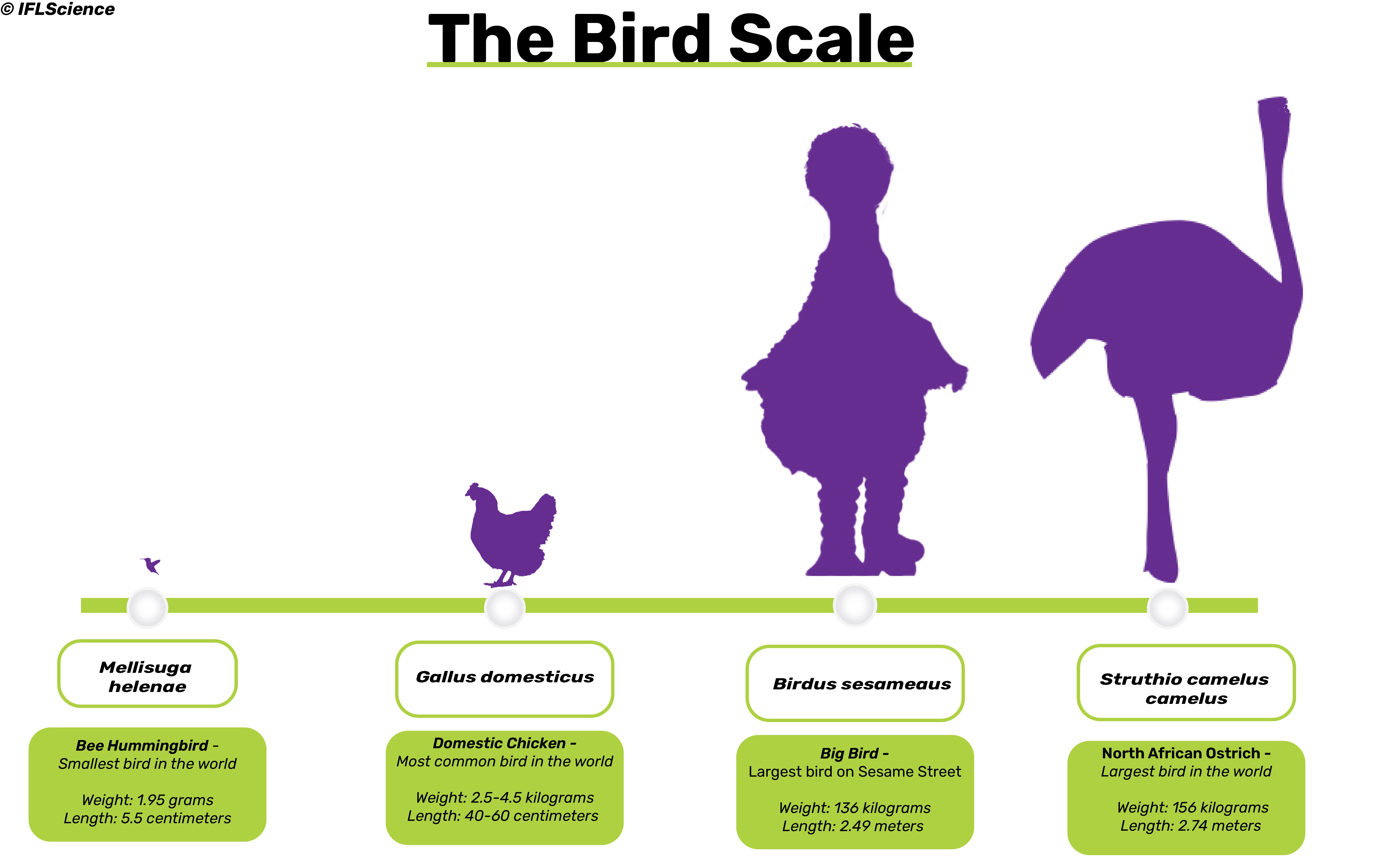Everybody loves a teeny tiny animal. I mean, c’mon, have you seen the pea-sized frog? Or the recently discovered mini deer species? Perhaps you’ve been tempted to slip a fluffy, tent-building Honduran white bat in your pocket. Well, it’s time to introduce you to another itsy-bitsy animal to squeal over: the bee hummingbird (Mellisuga helenae), aka the smallest bird in the world.
How big is the bee hummingbird?
Hummingbirds as a group are already pretty small, but the bee hummingbird really is absolutely tiny. Males of the species measure just 5.5 centimeters (2.2 inches) long – only a touch bigger than the height of your average credit card – while females are about 6.1 centimeters (2.4 inches). About half of that length is made up of the tail and beak.

The scientific name for Big Bird may or may not be made up.
Image credit: © IFLScience
The bee hummingbird is also super light. Find a penny and put it in your hand; this bird weighs about the same or even less, with males clocking in at 1.95 grams (0.07 ounces) and females 2.6 grams (0.09 ounces). Anywhere between 22 to 34 percent of that is muscle, specially adapted to keep up with the demands of flight.
With its all-around smolness and rapidly flapping wings (80 times per second) creating a “humming” sound, it’s no wonder that this bird got the bee as a namesake.
What do bee hummingbirds look like?
What they lack in size, bee hummingbirds more than make up for in beauty. Like many other hummingbirds, they have iridescent feathers, which in males, cover their upper body, heads, and throats. Although females also have iridescence, the colors on a male tend to be brighter.
However, where they differ from other hummingbirds is in the shape of their beaks. While other species tend to have the characteristic long, curved beak, bee hummingbirds have a comparatively short, straight one for gobbling up their body weight in nectar and insects each day.
Where do bee hummingbirds live?
If you want to catch a glimpse of a bee hummingbird, there’s only one place you need to put on your list: Cuba. The species is endemic to its islands, typically found at the edge of or within dense forests, though they can also be spotted in swamplands and even people’s gardens.
How do bee hummingbirds reproduce?
As the wet season turns to dry and plants begin to flower, bee hummingbirds get to breeding. This involves the males banding together in groups called leks to sing attractive songs. Like a talent show with a splash of Tinder, the females take in the performance of multiple leks before settling on a mate – although males can take multiple partners in a season.
Bee hummingbirds can also mate whilst hovering in the air, with their wings sometimes beating up to 200 times per second – human performance seems more than a bit lackluster in comparison.
Skip to 1:30 to see teeny tiny bee hummingbird babies.
The result of such athleticism is usually two tiny white eggs, each roughly the size of a coffee bean, laid in small, cup-shaped nests carefully put together from moss and cobwebs. These eggs take about two to three weeks to hatch, after which they can spend over a month with their mom before flying the nest.
Are bee hummingbirds endangered?
While the bee hummingbird calls the forests of Cuba its home, that home is rapidly shrinking. According to the IUCN Red List, its native woodland habitat has been modified or destroyed to make way for crops and livestock, or because of logging. As a result, the population of bee hummingbirds has declined to the point that it’s now considered Near Threatened.
Source Link: What’s The Smallest Bird In The World?